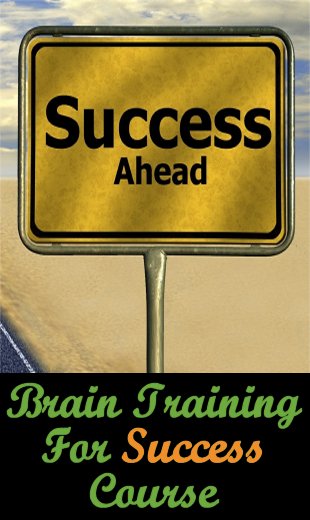Overcoming Camera Shyness
It seems there are two types of people – those who love having their photo taken or appearing on video, and those who find it a terrifying prospect.
I am definitely in the latter camp, and have been for as long as I remember.
If you’re the sort of person who is happy to be on camera, then you may wonder why some people are not like that.
But if you’re one of those, like me, who does not relish the thought of being snapped or recorded, then this article is for you – I’ll cover some of the reasons why people are camera-shy, and offer some tips on how to overcome it (or, at least, make it bearable).
What Is Camera Shyness?
Put simply, the term describes anybody who is unwilling to be photographed (which, these days, includes being videoed too).
It is also often the case that people who are camera-shy are also more likely to be anxious about speaking or performing in public, regardless of whether cameras are present or not. (This is a subject I have already covered here.)
Why Are Some People Camera Shy?
There are a few main reasons, including because they:
- Do not like the way they look on camera.
- Do not like the sound of their voice when it’s recorded.
- Have a poor self-image, have low self-esteem, or lack of confidence.
- Do not like being the centre of attention.
- Do not want how they look right now to be on permanent record.
- Are suspicious of what the photo or video will be used for.
The first two of these are completely normal – at first.
The scientific term for this is the mere-exposure effect, which effectively says that humans develop preferences for things with which they are familiar.
The problem is that we often become used to seeing ourselves in the mirror, which is not how others see us, and the voice we hear when we talk is affected by the sound travelling through our bones – and this tends to make our voice sound lower to us than it does to others.
Of course, some people have what are generally referred to as physical defects (e.g. large and visible birthmarks, unusually large ears, missing limbs) and/or speech impediments (e.g. stuttering).
It’s understandable that, in a society that is so heavily focused on appearance, such people may be reluctant to appear on camera, but that does not mean you cannot or should not.
The fourth factor listed above, i.e. not wanting to be the centre of attention, is an attribute most frequently found in people who are predominantly introverted.
Being aware that any photo taken now is only a snapshot of how they look today is more of a concern these days thanks to the Internet and social media.
In days gone by (when I was younger), photos were taken using non-digital cameras and they had to be printed, so if you didn’t like a photo, you just threw it away (or hid it somewhere).
However, these days, once a photo is posted somewhere online, it is pretty much there forever.
The final factor is also a result of the modern technological age – people have legitimate concerns about their privacy being invaded, their telephone calls and emails and messages being monitored, and their faces being recorded on closed circuit TV cameras, satellites, and other such devices.
And the problem is, you may not know it’s happening, and you definitely have no control over what might be done with all of that information.
Even though I live in the middle of nowhere and haven’t been out in public for over a dozen years, I wouldn’t be surprised to find I was on a surveillance tape somewhere, somehow.
Having said all of that, this article is more about people who feel like they maybe should be on camera (e.g. because they want to start video marketing) but are too shy to do so.
And that’s what the next section will address.
Tips On Overcoming Camera Shyness
The bad news is that there is no magic button that will instantly make you into a natural, but the good news is, there are tips and techniques you can put into effect that will let you become more at ease with the whole process – and who knows, one day you may well come to love shooting videos, for example.
So, here are a few ideas to help those, like me, who dread the idea of being on camera.
- Understanding. The first step is to try to establish why it is that you are camera-shy. It may be one or more of the reasons listed above, or there may be others (e.g. you had a bad experience in the past). Once you understand what’s driving that shyness, you’ll have a better idea of what you need to do to overcome those fears (e.g. you might decide to hire a voice coach).
- Acceptance. You need to accept that being nervous or shy about being on camera is perfectly normal and that you’re not alone. It probably affects a lot more people than you might think, because many of those you see (on videos especially) may simply have learned how to overcome and hide their own fears.
- Focus On The Why. Whenever you take a photo or appear on video, there has to be a reason why you’re doing it. These reasons might include because your job requires it, you want to attract more customers, you want a memory of a special day, and probably hundreds more.
The key point is, if you focus on why you’re doing this, that motivation can help overcome your anxiety.
- Practice. As with anything new, it feels uncomfortable at first, but the more you do something, the more at ease you become with it. And being on camera / video is no different, both from a technical perspective (e.g. using the equipment, lighting, settings) and a mental perspective (e.g. anxiety, confidence).
This is where the mere-exposure effect comes into play – the more you see yourself on camera and hear your voice, the more familiar you’ll become with the real you, and the less it will bother you.
So, practise taking loads of selfies or recording yourself on video (you could even try your hand at creating a journal on video), and don’t worry about how you look (or sound), because nobody else ever needs to see these if you don’t want them to.
Even before video, you can practise what you’re going to say in front of a mirror, which is a technique I used many times in advance of having to give a talk. It’s not the same as recording yourself on video, but it’s a stepping stone that makes it easier and faster during the initial few rehearsals.
It’s also worth spending the time getting to know your equipment, whether it’s your smartphone or a full video recorder or webcam on your computer, because being comfortable with that means it’s one less thing to worry about later on.
And remember that the first few videos you publish online are likely to have a very small audience, which gives you time to improve and build your confidence before lots of people see and hear you.
- Scripting. For video shoots (as well as for public speaking, etc.), it really helps to write down, in advance, what you want to say. This can be a list of bullet points, in order, or it can be a full script.
If you choose to do the latter (which is my preference), this does not mean you need to memorize or read that script word-for word. In fact, that’s usually a bad idea because it comes across as unnatural and stilted. The point is, the better you know what you want to say in advance, the better it will sound.
I’ve seen some very well-known actors being interviewed (e.g. on talk shows), and without a script, they come over as people who can barely string two words together and who are definitely not comfortable being there.
- Be Comfortable. Wearing clothes you feel comfy in can make a big difference – if your clothes don’t feel right then nor will you, and it can show.
I always found that my pre-show nerves more or less vanished the moment I put on my performing suit (usually a dinner jacket), because it was like I was adopting a different, less shy, less nervous personality. You may find that wearing different clothes for your videos helps you in the same way – you’re temporarily putting aside your camera-shy persona and taking on a more confident, enthusiastic one.
- Relax. Before the photo shoot or video recording, practise relaxation techniques (e.g. deep breathing, meditation).
- Act Naturally. This sounds like an oxymoron, and it’s a glib phrase that is often said but rarely specific, but in this context, it really means you should be yourself (which actually means no acting at all).
If you want to build up a rapport with your audience, you should do whatever you usually do (e.g. gesture with your hands) because anything else will come over as insincerity (which people, on the whole, dislike).
- Smile. There are two types of smile – the fake, forced ones, and the genuine ones. Needless to say, you need to learn how to do the latter, because when people spot a fake smile (as they will), it can destroy your credibility in an instant.
One way to tell the difference is by looking at the eyes – with a real smile (also known as a Duchenne smile), you will usually see tiny wrinkles near the corners.
This is because different muscles are used when smiling naturally compared to forcing a smile.
Fake smiles often tend to last longer than real ones, which often come and go within five seconds, and may be asymmetrical.
- Talk To Your Audience. On video, it’s important that you talk to the camera, and not look around the room (to avoid “eye contact” with the camera). If you want, you can pretend the camera is a friend and you’re just chatting to them face-to-face.
- Passion. On video, most people would prefer to see somebody talking passionately about a subject and not look like a film star, then have somebody look perfect but appear to have no interest in what they’re saying.
- Be Deliberately Silly. People who are too tense when it comes to having their photo taken, because they think they will look silly, often end up overcompensating by looking too solemn and stilted.
One way to overcome this is to get them to be silly on purpose. This will help put them at ease and loosen up, because you’re aiming for somewhere in the middle – not too crazy but not too emotionless.
- Find The Right Photographer. If you’ve decided to have a professional photo shoot, then make sure you find a photographer you’re comfortable with. That is, they should be able to put you at ease and work with you, knowing your concerns. If you don’t do this and use somebody who does not have these traits, it may only convince you that you were right to be anxious.
- Start With Voice-Overs. You can always build up your confidence in steps. For example, if you want to start creating videos, you could begin by doing slideshow presentations and using your voice only, and then, once you become more used to the idea, actually appear on the video yourself.
Again, you could start by superimposing your talking head in one corner of the video, where you’re less visible, and then graduate to being the focal point (e.g. against a green screen or with your home or office behind you).
- Editing. Where it’s a photo or a video, don’t forget that it’s increasingly easy to edit your material before exposing it to the world. You can use photo editing software such as Photoshop (e.g. to crop parts out, change skin tone, remove blemishes) or video editing software such as Camtasia (e.g. to remove sections that you screwed up, to cut out the um’s and er’s, or to add a background track).
- Ask For Advice. At first, when you are still not used to seeing yourself on camera, ask somebody else to help you choose the best photo(s). Even once you are more familiar with all of this, it can still be helpful to listen to other people’s opinions.
My Experience
I have to confess that I have, so far, never published anything on video – not even doing a voice-over.
On social media, I rarely even use my own photo, preferring to use something non-personal instead.
I do use an oldish head-shot of myself (which was professionally taken) on some sites, including this one, so that people know who they’re dealing with, and it’s one I even quite like, but when I had to take a new photo for a replacement passport in the summer of 2019, I was shocked at what I saw.
This isn’t because I think I’m ugly (or handsome – I just am, and don’t care how others think I look), but because of how old I now appear.
And it’s not because my age is a reminder of the fact that I’m very much in the second half of my life – I don’t fear death itself (only any pain that might accompany it).
The thing is, I rarely look in the mirror at home, so I’m not really seeing myself change on a gradual, day-to-day basis, as most people do.
The photo I do use, when I choose to, was taken some time around 2000, give or take a year or two, and 19 years has made more of a difference than I expected.
As I said above, I have talked to the mirror many, many times, when practising a speech for work, or rehearsing a magic act, but even doing that was difficult for me, no matter how often I did it.
In some ways, my introversion can be so extreme that even watching displays of extroversion makes me feel physically and mentally uncomfortable. (I think this is one reason why I prefer to listen to music over seeing it performed live.)
So will I ever appear on video?
The written word is my medium, and it took many years (maybe decades) to realize that, so I guess the answer is, only if I decide there’s a compelling reason to do so (which thus far I have not found).
However, in the spirit of what this article is about, I’m going to end this section with the older photo I do use, and one taken today, but I’m not going to lie, publishing a photo of myself is not an easy thing to do. 🙂
 |
 |
Actually, now I look at today’s photo, it’s not as bad as I thought. Maybe this article is helping already 🙂
But notice how trying to force myself to smile for the camera has created an asymmetric smile, as mentioned above?
Conclusion
If I were a lot younger, I would probably force myself to learn how to conquer my own camera shyness, because I see it as a business necessity, but at this stage of my life, I don’t think I have sufficient interest or motivation or need to do so.
But for all those you read this article because you are wary of appearing on camera, I hope you have found this article useful and that’s you’ll give it a try, because you may just turn out both to enjoy it and to be good at it.
Additional Resources
These are suggestions for those who wish to delve deeper into any of the above:







